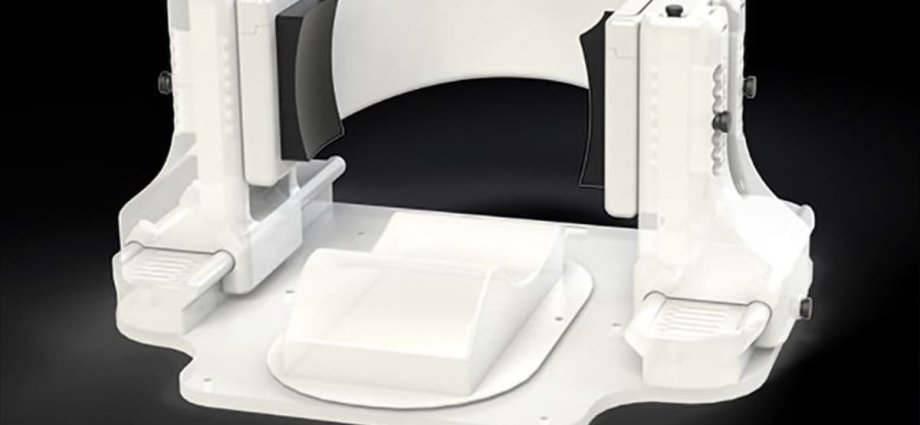Scientists have developed a new, non-invasive brain-stimulating device to interrupt problematic signals associated with chronic body pain.
While pain is a crucial warning system for the body, some conditions can cause these signals to malfunction.
For instance, in chronic pain sufferers, faulty signals originating deep in the brain can trigger false alarms about an injury that has already healed, an amputated limb, or other similar complex situations.
While medications can help treat the pain, these require frequent administration and often carry significant side effects including addiction.
Researchers hope their new “Diadem” device, described in the journal Pain, can be a practical non-invasive solution for patients experiencing such life-altering conditions and looking for new treatments.

The Diadem produces low-intensity ultrasound waves to stimulate deep brain regions, disrupting the faulty signals behind chronic body pain.
A recent clinical trial including 20 participants with chronic pain showed that those using the device experienced pain relief.
Each of the participants experienced two 40-minute sessions with Diadem, receiving either real or sham ultrasound stimulation. They reported their pain a day and a week after their sessions.
About 60 per cent of the patient group receiving the real treatment said they found a clinically meaningful reduction in symptoms at both time points.
“We were not expecting such strong and immediate effects from only one treatment,” study co-author Thomas Riis said.
“The rapid onset of the pain symptom improvements as well as their sustained nature are intriguing, and open doors for applying these noninvasive treatments to the many patients who are resistant to current treatments,” Dr Riis said.
Researchers say the device works by directly regulating the activity of certain brain circuits.
While there are existing methods to alter brain circuits, scientists say these cannot selectively reach the anterior cingulate cortex brain structure involved in pain perception.
In the current study, scientists also tweaked the device’s ultrasound emitters to adjust the way sound waves reflect off the skull.

“On average, active stimulation reduced pain by 60 per cent immediately following the intervention,” scientists wrote, adding that the sound waves were well tolerated with no adverse events detected in the patients.
“Direct, ultrasonic stimulation of the anterior cingulate cortex offers rapid, clinically meaningful, and durable improvements in pain severity,” researchers said.
Since the current study had limited participants, scientists have called for a large-scale trial to determine the effectiveness and safety of the device over long-term use.
Once validated, they say the device could potentially contribute towards efforts to reduce the administration of opioid medications or drugs with systemic side effects.











